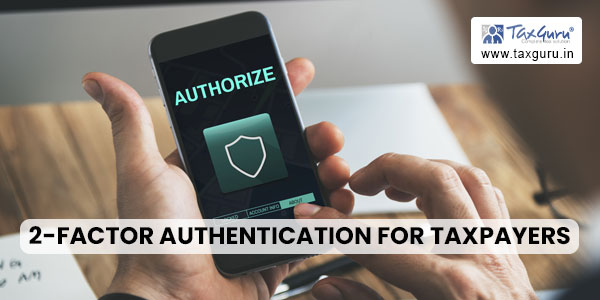2 Factor Authentication for e-Way Bill and e-Invoice System will be made mandatory from 15/07/2023 for all the taxpayers with AATO above 100cr.
Introduction
Effective from 15/07/2023, the National Informatics Centre (NIC) has made 2-factor authentication mandatory for all taxpayers with an Aggregate Annual Turnover (AATO) above 100cr. This measure aims to enhance the security of the e-Way Bill and e-Invoice System. In addition to the conventional username and password, users will now need to authenticate with a One-Time Password (OTP) during login.

To ensure a seamless user experience, the NIC has provided three different modes for receiving the OTP:
1. SMS: The OTP will be sent as an SMS to the taxpayer’s registered mobile number.
2. ‘Sandes’ app: Taxpayers can download and install the ‘Sandes’ messaging app provided by the government to receive the OTP securely on their registered mobile number.
3. ‘NIC-GST-Shield’ app: The ‘NIC-GST-Shield’ mobile app is exclusively provided by the e-Way Bill/e-Invoice System for generating OTPs. To download the app, visit the e-Way Bill/e-Invoice portal and follow the link ‘Main Menu -> 2-Factor Authentication.’ Install the NIC-GST-Shield app on your registered mobile number and complete the registration process. It is important to ensure that the app’s displayed time is synchronized with the e-Way Bill/e-Invoice system. Upon opening the app, an OTP will be displayed. Enter this OTP to proceed with the authentication process. The OTP automatically refreshes every 30 seconds. One of the significant advantages of this app is that it doesn’t require an internet connection or dependence on a mobile network for generating OTPs.
Registration for 2-Factor Authentication
To register for 2-factor authentication, taxpayers should log in to the e-Way Bill System, navigate to Main Menu -> 2 Factor Authentication, and complete the registration process. Once registered, users will be prompted to enter the OTP along with their username and password during login. It’s important to note that OTP authentication is linked to individual user accounts. Sub-users under a GSTIN will have separate authentication based on their registered mobile numbers in the e-Way Bill/e-Invoice System. The same 2-factor authentication applies to both the e-Way Bill and e-Invoice systems.
Conclusion
The implementation of mandatory 2-factor authentication for taxpayers with AATO above 100cr from 15/07/2023 is a significant step toward bolstering the security of the e-Way Bill and e-Invoice System. By requiring an additional layer of authentication through OTP, the National Informatics Centre aims to safeguard sensitive taxpayer information. Taxpayers are encouraged to promptly register for 2-factor authentication and choose the most convenient OTP mode for their needs. This enhanced security measure will contribute to a safer and more robust e-Way Bill and e-Invoice ecosystem.





OTP will go every time we login . Where it will go to the registered person or sub users. How to get OTP to sub users